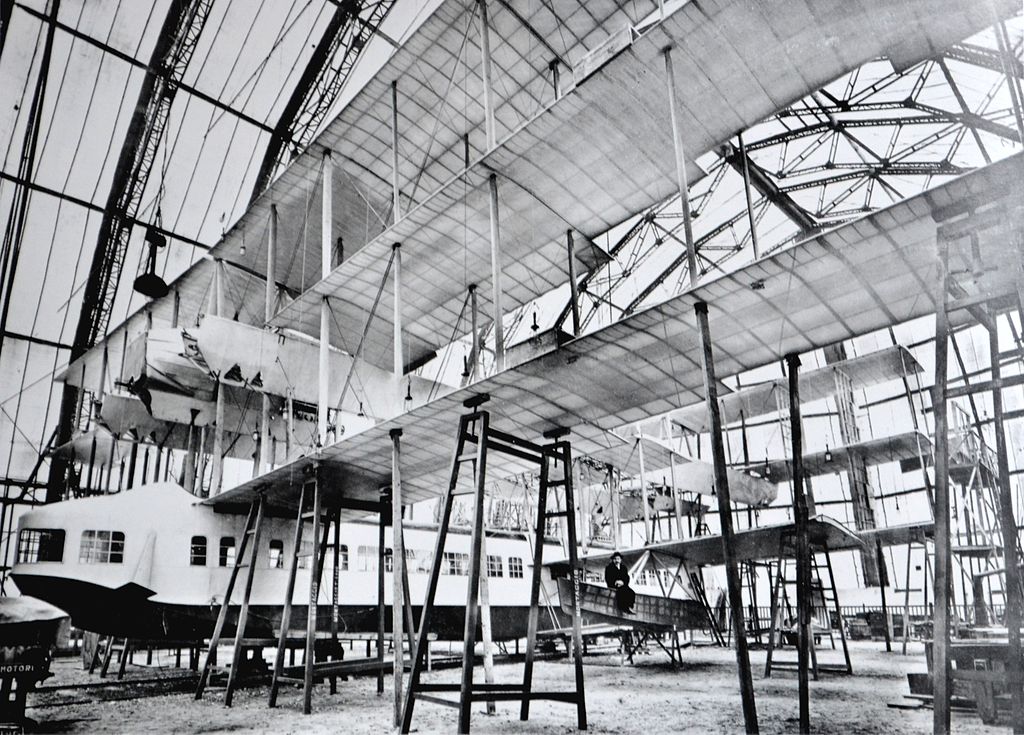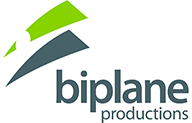146: Marketing Less to Sell more
Right after World War I, military plane builders scrambled to find a new market for their products. While some looked for ways to adapt warplanes for civilian use, Gianni Caproni set about designing the largest commercial plane ever. The famous biplane engineer’s ambitious vision was the Transeareo (also called the Caproni Ca.60), a floating plane capable of carrying up to 100 passengers.
To carry its unprecedented cargo, Caproni designed the plane with not one, not two, but nine pair of wings. No, really. I guess the math makes sense: “If two sets of wings lift X kilograms, then nine sets of wings should be able to lift four and a half times that weight.”

Sadly, though, the design didn’t make sense. On its second demonstration and first real attempt at flight, the flying Erector Set crashed onto Lake Maggiore in Italy. (You can see pictures of the carnage here.)
I can relate to Caproni. Yesterday was the thirteenth anniversary of Biplane Productions opening for business. During the first few years, I thought the way to get profitable in a hurry was to promise as many services as possible.  My company brochure was an 8-page catalog with lots of small print filled with insecure words. I even ran this embarrassing ad in Auctioneer. It was immature, shoddy, and poorly proofed. I tried to do a bunch of things “good enough” rather than focus on doing one or two things well.
My company brochure was an 8-page catalog with lots of small print filled with insecure words. I even ran this embarrassing ad in Auctioneer. It was immature, shoddy, and poorly proofed. I tried to do a bunch of things “good enough” rather than focus on doing one or two things well.
I made a lot of mistakes. At least two big, reliable accounts crashed and burned within the first few years.
Fast forward a decade. I don’t run ads in Auctioneer. I don’t have a company brochure. I don’t have a booth at trade shows, and I don’t promote a wide range of services in any medium or environment. I’m generating far more business each year with glacial rate changes and next to no advertising.
How? The same way I tell university seniors and young entrepreneurs to build their businesses: find both a proficiency and an underserved niche that benefits from that proficiency. Then dive full force almost exclusively into that fishing hole.
One interesting thing about the Transaereo: it was designed without a rudder. Caproni thought that the pitot could create the same steering input by varying the action of the three columns of wings. I find a lot of small businesses like Biplane Productions used to be: rudderless, grabbing any updraft it can and taking it where it leads. For me, though, that led to an unstable, unsustainable flight. The business slowly gained altitude, but it was a fight.
Now, I focus on two things: print design & industry education. With that focus, it has been getting easier to estimate time and costs. I’ve been getting faster and faster at the same tasks, which has allowed me to give myself a raise without changing my rates. My “past & present client” list has been consistently growing. Specialization has given the impression of expertise, and people hire experts—especially the ones teaching their marketing classes.
Auctioneers ask me regularly how to grow their seller base. One of the main things I recommend is focusing on a narrower range of asset categories and/or geographic service areas. It’s impossible to specialize in five or eight types of auctions, but I see auctioneers claiming that all the time. Even if you do other services or sell different assets, you don’t have to market them all. I still write press releases, post auctions on listing sites, and help companies with social media. I just don’t market those and other services, because they dilute my brand.
One of my good friends flies Boeing 777’s for United Airlines. He told me that his international flights leave the ground, weighing more than half a million pounds. He said that some 747’s leave the ground, weighing roughly 750,000 pounds. Both of those international jetliners carry way more than 100 passengers, and both have only one pair of wings. Granted, those two wings are much bigger than the Transaereo’s contraptions. The power is more concentrated and efficient—something aeronautical engineers figured out well before the jet engine, even before the second World War.
We should follow their lead into “less is more.” Let’s be jetliners instead of lumbering origami. Let’s concentrate our brands. Let’s look like experts. Let’s stop telling people we can auction just about anything.
Then, let’s watch our brands and revenues soar to 30,000 feet!


